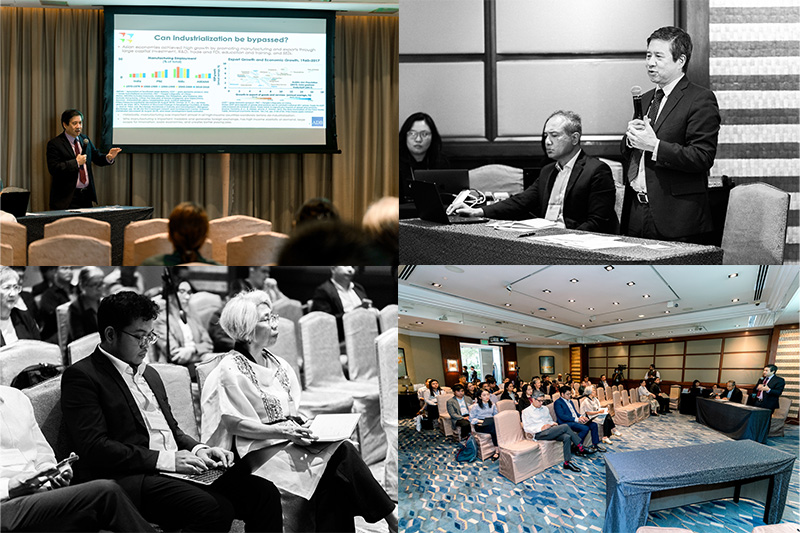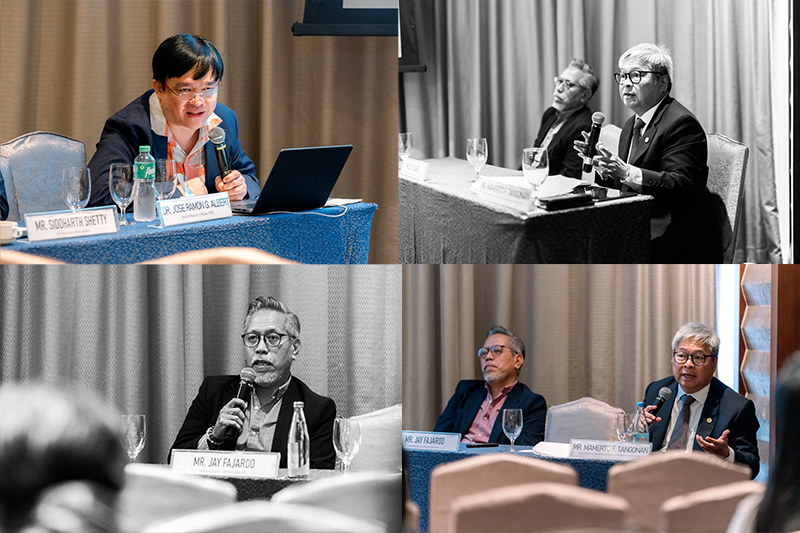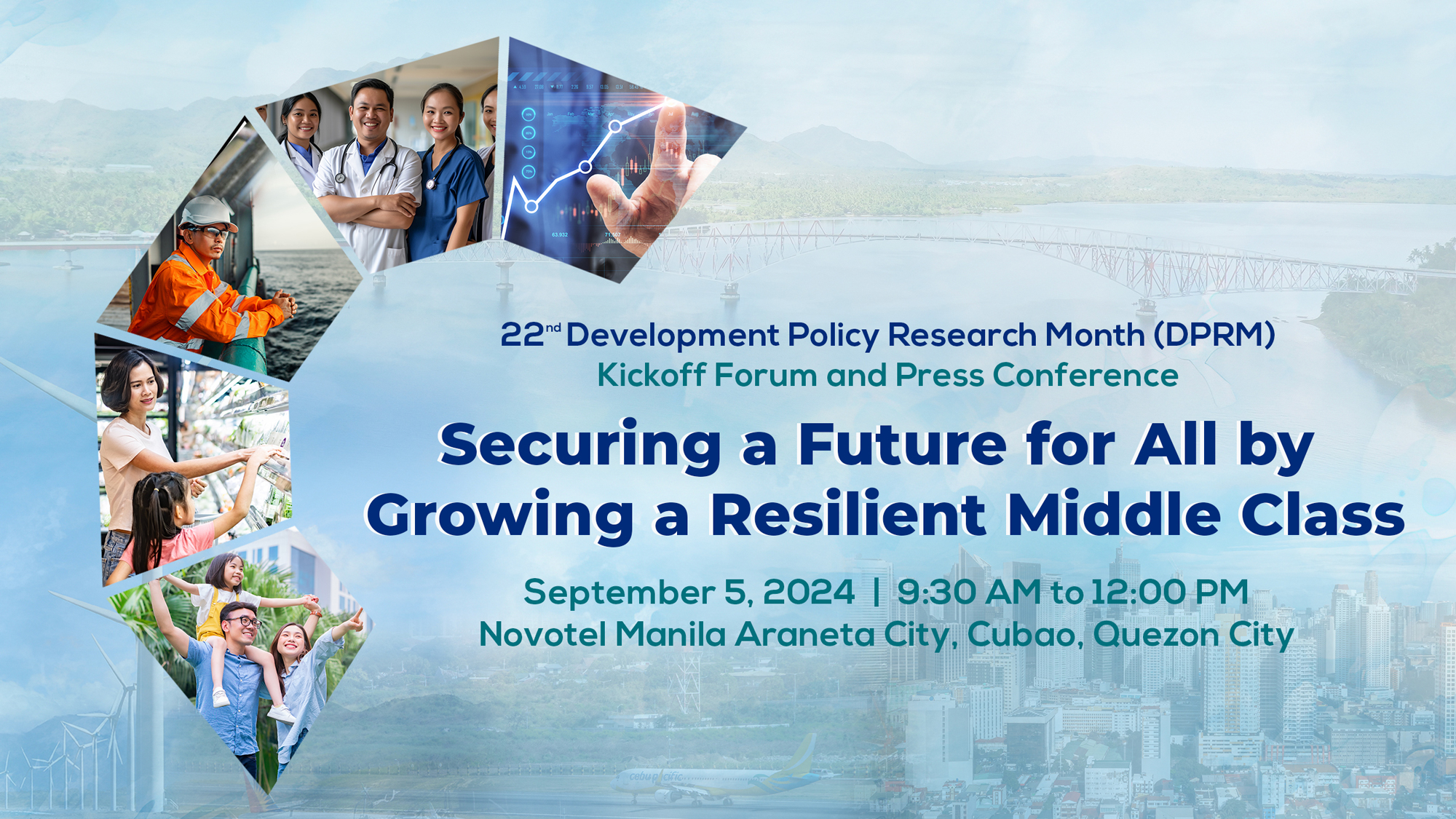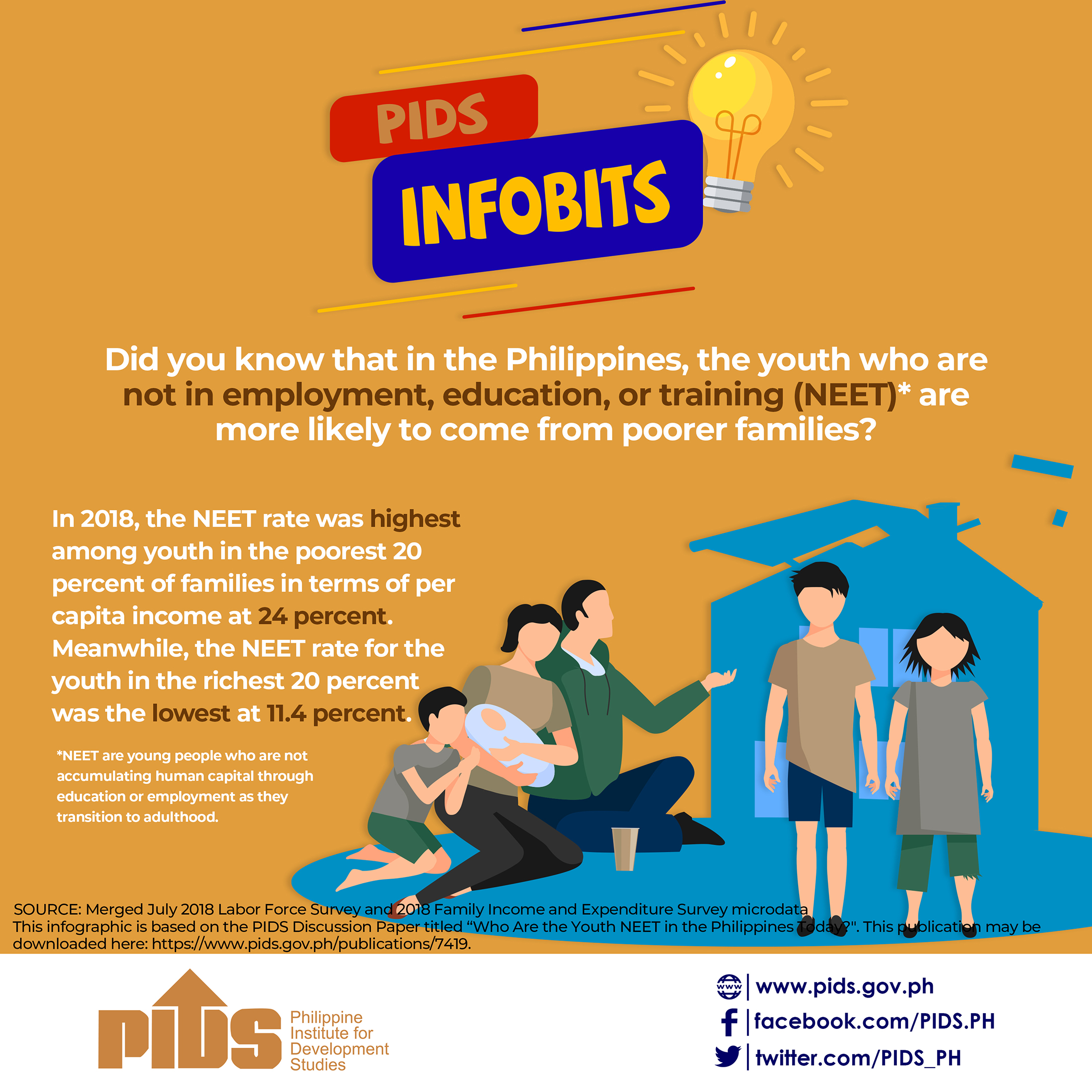MANILA, Philippines – In early April 2020, Cavite Governor Jonvic Remulla asked President Rodrigo Duterte to include middle-class families in his province in the government's emergency subsidy program (ESP).
The ESP is meant to provide the 18 million poorest families in the country with cash aid to support them during the lockdown caused by the coronavirus pandemic.
“They are often overlooked. They pay the most taxes. They keep our economy alive. They are mostly law-abiding citizens,” Remulla said.
Duterte agreed and said that the government must extend help to middle-class families, but said there are not enough funds to cover them.
But who exactly are the middle class?
Middle class defined
In 2018, the Philippine Institute for Development Studies (PIDS) released a study that “unmasked” the middle class in the Philippines. It was penned by PIDS senior research fellow Jose Ramon G. Albert, research associate Angelo Gabrielle F. Santos, and research assistant Jana Flor V. Vizmanos.
However, the PIDS researchers said there is no international standard for defining the middle class.
“While the middle class plays a crucial role in a country’s development, there is no internationally accepted practice for defining the middle-class, just as there is no universally accepted definition of poverty though poverty tends to be seen and measured from a monetary lens,” the researchers wrote.
Sonny Africa, executive director of socioeconomic think tank IBON Foundation, agreed with this and said the middle class is an ambiguous concept.
Still, both PIDS and IBON Foundation said the middle class covers a wide range of income levels. To provide a better idea on who belongs to the middle class, the two think tanks provided estimates using data from the Philippine Statistics Authority (PSA) such as per capita income, poverty levels, and family income and expenditure survey (FIES) data.
PIDS said a middle-class family of 5 members earns between P18,200 to P109,000 monthly. IBON Foundation estimated a slightly narrower range of P25,000 to P100,000.
The PIDS explained that their estimates were based on the country’s average poverty lines in 2015. The monthly poverty threshold for a family of 5 stood at P9,064 (later revised to P9,452) according to the PSA. Using this figure, PIDS clustered the income classes based on the following definitions:
Savings
IBON Foundation, meanwhile, based their estimates on the capability of a family to have household savings.
“We think that a household having savings can indicate having more than enough income for daily needs and be used as a sign of being middle class – as opposed to a poor/low-income household having to use up all their available income and not being able to save,” Africa explained.
According to PIDS, a typical middle-income class family places value on the children’s human capital development which is why they spend less on food and more on education.
They also live in an urban area, have permanent jobs or salaried work, tend to pursue education higher than high school, tend to own their dwellings, and have access to electricity and safe water.
“[The study] suggests that the middle class has accumulated various assets, such as televisions, cellphones, refrigerators, washing machines, radios, desktops/laptops, motorbike, stereo, aircon, oven, and cars,” the PIDS researchers said
PIDS further classified the middle class into 3 clusters: lower middle income, middle middle income, and upper middle income. They were grouped as follows:
Majority (62.3%) of the middle-class families belong to the lower middle-income cluster, who earn only a few thousands more than those who belong to the low-income group.
IBON Foundation did not further provide a breakdown of the middle income class, but Africa agreed that it is a wide spectrum. “It is more difficult to generalize about the 'middle class' because this covers a wide range of income levels, asset ownership, and living conditions above minimal standards of living,” he said.
The middle class during coronavirus lockdown
The government prioritizes low-income households over the middle class during the lockdown. Under the Bayanihan to Heal as One Act, P200 billion is being rolled out as cash aid to 18 million “poor families.”
Africa said the ESP already covers a part of the middle class – those families that belong to the lower end of the income group. He said 18 million families correspond to roughly the poorest three-fourths of all families in the country.
The latest FIES data from the PSA said there were a total of 24.7 families in the Philippines in 2018. This makes 18 million families about 73% of all families in the country.
Both PIDS and IBON Foundation’s estimates indicate that low-income households make up more than half of all the families in the country. PIDS said about 51% of families are part of the low-income class, while IBON Foundation estimated it at 65%.
In need of assistance
Both PIDS and IBON Foundation's figures also suggest that some middle-class families are already covered by the ESP.
“This is implicit acknowledgment of how a large part of the middle class at the lower end of this income group does need support. Because their incomes are still not that high and they have little savings, it is quite correct to also include them among the priority for emergency subsidies,” Africa said.
But as of April 20, only around 29.7% of the qualified families nationwide have received subsidies. Many are still waiting to receive aid. (READ: IN LIMBO Poor families still await subsidies during coronavirus lockdown)
For the remaining middle-income class families who have relatively higher incomes and assets, Africa said that the lockdown’s impact on them may not be as harsh but not easy all the same. Still, he said, these families beyond the 18 million should be "able to manage."
Albert had also earlier said that the middle class don’t need as much attention as the poor, but they should also get assistance from the government. So far, the government has announced a P51-billion wage subsidy for around 3.4 million middle-class workers severely affected by the lockdown.
Africa added that small business owners will be particularly troubled due to the looming economic crisis.
“More than ever, the poor and middle class should stand in solidarity with each other rather than be divided in an internecine battle about who is deserving of government support and who isn't,” Africa said.
One thing that the middle class can do, according to Africa, is to join the clamor of the poor for substantial and effective government support during the pandemic and the severe economic crisis that is unfolding.
“The government has the obligation and responsibility to provide for the needs of every Filipino and family in need. It is actually failing to do this and a common front of the poor and middle class is a powerful political force to advocate for this,” Africa said.
The ESP is meant to provide the 18 million poorest families in the country with cash aid to support them during the lockdown caused by the coronavirus pandemic.
“They are often overlooked. They pay the most taxes. They keep our economy alive. They are mostly law-abiding citizens,” Remulla said.
Duterte agreed and said that the government must extend help to middle-class families, but said there are not enough funds to cover them.
But who exactly are the middle class?
Middle class defined
In 2018, the Philippine Institute for Development Studies (PIDS) released a study that “unmasked” the middle class in the Philippines. It was penned by PIDS senior research fellow Jose Ramon G. Albert, research associate Angelo Gabrielle F. Santos, and research assistant Jana Flor V. Vizmanos.
However, the PIDS researchers said there is no international standard for defining the middle class.
“While the middle class plays a crucial role in a country’s development, there is no internationally accepted practice for defining the middle-class, just as there is no universally accepted definition of poverty though poverty tends to be seen and measured from a monetary lens,” the researchers wrote.
Sonny Africa, executive director of socioeconomic think tank IBON Foundation, agreed with this and said the middle class is an ambiguous concept.
Still, both PIDS and IBON Foundation said the middle class covers a wide range of income levels. To provide a better idea on who belongs to the middle class, the two think tanks provided estimates using data from the Philippine Statistics Authority (PSA) such as per capita income, poverty levels, and family income and expenditure survey (FIES) data.
PIDS said a middle-class family of 5 members earns between P18,200 to P109,000 monthly. IBON Foundation estimated a slightly narrower range of P25,000 to P100,000.
The PIDS explained that their estimates were based on the country’s average poverty lines in 2015. The monthly poverty threshold for a family of 5 stood at P9,064 (later revised to P9,452) according to the PSA. Using this figure, PIDS clustered the income classes based on the following definitions:
- Low income – less than twice the official poverty line
- Middle income – between twice the poverty line and 12 times the poverty line
- High income – at least equal to 12 times the poverty line
Savings
IBON Foundation, meanwhile, based their estimates on the capability of a family to have household savings.
“We think that a household having savings can indicate having more than enough income for daily needs and be used as a sign of being middle class – as opposed to a poor/low-income household having to use up all their available income and not being able to save,” Africa explained.
According to PIDS, a typical middle-income class family places value on the children’s human capital development which is why they spend less on food and more on education.
They also live in an urban area, have permanent jobs or salaried work, tend to pursue education higher than high school, tend to own their dwellings, and have access to electricity and safe water.
“[The study] suggests that the middle class has accumulated various assets, such as televisions, cellphones, refrigerators, washing machines, radios, desktops/laptops, motorbike, stereo, aircon, oven, and cars,” the PIDS researchers said
PIDS further classified the middle class into 3 clusters: lower middle income, middle middle income, and upper middle income. They were grouped as follows:
- Lower middle income – between two and 4 times the poverty line
- Middle middle income – between 4 and 7 times the poverty line
- Upper middle income – between 7 and 12 times the poverty line
Majority (62.3%) of the middle-class families belong to the lower middle-income cluster, who earn only a few thousands more than those who belong to the low-income group.
IBON Foundation did not further provide a breakdown of the middle income class, but Africa agreed that it is a wide spectrum. “It is more difficult to generalize about the 'middle class' because this covers a wide range of income levels, asset ownership, and living conditions above minimal standards of living,” he said.
The middle class during coronavirus lockdown
The government prioritizes low-income households over the middle class during the lockdown. Under the Bayanihan to Heal as One Act, P200 billion is being rolled out as cash aid to 18 million “poor families.”
Africa said the ESP already covers a part of the middle class – those families that belong to the lower end of the income group. He said 18 million families correspond to roughly the poorest three-fourths of all families in the country.
The latest FIES data from the PSA said there were a total of 24.7 families in the Philippines in 2018. This makes 18 million families about 73% of all families in the country.
Both PIDS and IBON Foundation’s estimates indicate that low-income households make up more than half of all the families in the country. PIDS said about 51% of families are part of the low-income class, while IBON Foundation estimated it at 65%.
In need of assistance
Both PIDS and IBON Foundation's figures also suggest that some middle-class families are already covered by the ESP.
“This is implicit acknowledgment of how a large part of the middle class at the lower end of this income group does need support. Because their incomes are still not that high and they have little savings, it is quite correct to also include them among the priority for emergency subsidies,” Africa said.
But as of April 20, only around 29.7% of the qualified families nationwide have received subsidies. Many are still waiting to receive aid. (READ: IN LIMBO Poor families still await subsidies during coronavirus lockdown)
For the remaining middle-income class families who have relatively higher incomes and assets, Africa said that the lockdown’s impact on them may not be as harsh but not easy all the same. Still, he said, these families beyond the 18 million should be "able to manage."
Albert had also earlier said that the middle class don’t need as much attention as the poor, but they should also get assistance from the government. So far, the government has announced a P51-billion wage subsidy for around 3.4 million middle-class workers severely affected by the lockdown.
Africa added that small business owners will be particularly troubled due to the looming economic crisis.
“More than ever, the poor and middle class should stand in solidarity with each other rather than be divided in an internecine battle about who is deserving of government support and who isn't,” Africa said.
One thing that the middle class can do, according to Africa, is to join the clamor of the poor for substantial and effective government support during the pandemic and the severe economic crisis that is unfolding.
“The government has the obligation and responsibility to provide for the needs of every Filipino and family in need. It is actually failing to do this and a common front of the poor and middle class is a powerful political force to advocate for this,” Africa said.












